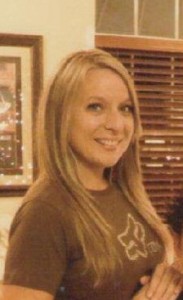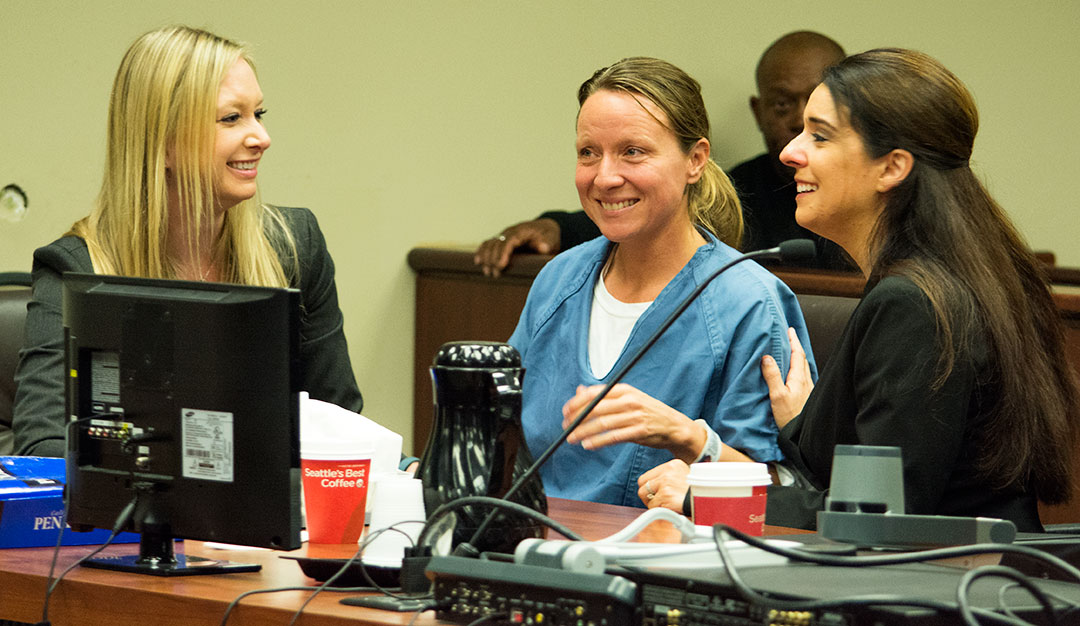Kimberly Long’s Conviction Reversed!
County of Conviction: Riverside
Convicted of: Second Degree Murder
Sentence: 15 to life
Years Served: 7
Cost to Taxpayers: $135,000
“This is one of those classic cases where the person who finds the dead person ends up becoming a suspect,” said Justin Brooks, Director of the California Innocence Project. “Her case was paper-thin when it went to trial, and now when you consider what we know since then, it’s absolutely a certainty that she’s innocent.”
In the early morning of October 6, 2003, Kimberly Long arrived home and discovered her boyfriend bludgeoned to death in the couple’s living room. Blood was everywhere. Panicked, she immediately called 911. Responding paramedics arrived and determined her boyfriend, Oswaldo Conde, had been dead for quite some time. His body was cool to the touch, his skin was an ashen color, and his body was in the beginning stages of decomposition.
Kimberly was taken to the Corona Police Department and interviewed. She had last seen Ozzy, as he was affectionately called, around 11:00 p.m. the night before. An intoxicated Kimberly had gotten into a couples’ quarrel with Conde and stormed off, leaving with her friend Jeff Dills. Because Kimberly admitted that she and Ozzy had gotten into an argument, law enforcement polygraphed her. She passed with flying colors.
Ozzy really had no enemies, although both he and Kimberly had been having problems with their respective exes. A polygraph of Ozzy’s ex-girlfriend came back inconclusive. And, initially, those close to Ozzy thought his ex-girlfriend was behind the murder, commenting, “you know we never thought that it would actually go this far, but it has. I mean, it makes sense, I mean, the way she is. It took, I’m sure it was her. I mean, I’m positive. There’s nobody else . . . she was gonna kill him all the time. I mean, it’s only obvious you know.”
Two days later, it would be the statement of one man – Jeff Dills – that would change the trajectory of the investigation, causing law enforcement to focus all of their attention on Kimberly and drop all other leads. Jeff said he dropped Kimberly off at 1:20 a.m., 49 minutes before the 911 call came in. Officers believed Jeff and, as such, could not ignore the gaping hole in Kimberly’s timeline. Nor could they focus on Ozzy’s ex as a suspect anymore because, if Ozzy’s ex committed the crime, the 49-minute window would be inexplicable.
Kimberly insisted that Jeff was wrong and that he must have been mistaken on the time. Unbeknownst to her, Jeff was a suspect in the case and, at the same time, had offered to help law enforcement in the investigation. He died before he could be thoroughly questioned about his statement. Yet based on this dead man’s statement, the case against Kimberly proceeded to trial.
The first jury hung, nine in favor of acquittal. The second jury, who had to take a break from deliberations to celebrate Christmas, returned a guilty verdict. The verdict came as a surprise to many. The alternate jurors lamented to trial judge Patrick F. Magers that the evidence was by no means enough to prove Kimberly killed Ozzy. Judge Magers, known to be a prosecutor-friendly judge, agreed. Although he handed down a life sentence to Kimberly, he stated, “To make a perfectly clear record in this matter, if this was a court trial, if the Court would have heard the evidence in this case, I would have found the defendant not guilty. I would have found that the evidence was insufficient to prove beyond a reasonable doubt. That is my trial court decision in this case. Obviously, it was not a court trial. It was a jury trial.”
Judge Magers was not the only judge to have a problem with Kimberly’s conviction. During the appeals process, a federal district court judge commented, “It is unfortunate that petitioner’s conviction largely hinged on the preliminary hearing testimony of a witness who died before trial.” A federal appeals court judge commented, “I have grave doubts about whether the State has convicted the right person in this case. Those doubts stem from the fact that it would have been virtually impossible for the defendant to commit the crime and eliminate all traces of her involvement even if she had arrived home at 1:20 a.m., as the State contends.”
It would be eleven years before Kimberly got a chance to appear before Judge Magers again. This time, Kimberly came armed with conclusive proof of her innocence – forensic pathology evidence that Ozzy died long before 1:20 a.m., forensic evidence that the perpetrator would have had blood on them and, yet, she did not, and the presence of unknown male DNA at the crime scene.
Kimberly also presented evidence of third-party motive. Ozzy had obtained a restraining order against his ex-girlfriend who had, in the months leading up to his murder, made increasingly harassing and threatening phone calls. She, at one point, threatened to “slash” both Ozzy’s and Kimberly’s throats. She also came to Kimberly and Ozzy’s house, put glue in the keyholes of the house and wrote “deadbeat” and asshole” in permanent marker on Ozzy’s white truck. Ozzy’s ex wrote a letter to Kimberly claiming, “I will always get the laugh in the end.” In the victim’s own words, he said of his ex, “she said that my girlfriend [Kimberly] is going to get it and for me to watch my back and she is not going to let me see my son.” He elaborated, “she hates my girlfriend [Kimberly] & she is going to ruin our lives.” In the request for a restraining order, Ozzy also requested orders regarding custody and visitation of his child.
Based on this evidence, Judge Magers reversed Kimberly’s conviction. He found the evidence of innocence credible, convincing, and compelling.
>> Read the next story, Rodney Patrick McNeal.


